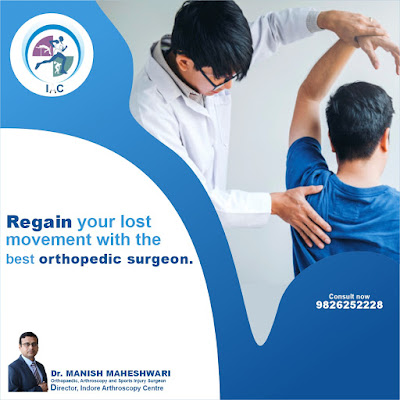Types of meniscus injuries and how to diagnose them
Meniscus, the C-shaped cartilage. that cushions the thigh bone and the shin bone has a lot of wear and tear happening on it due to the constant motion and load-bearing activities of the knee. This cartilage also gives stability and control in motions of the knee apart from cushioning the two major bones connected to the knee joint. The meniscus has a very important role in the proper and painless functioning of the knee joint. Any problem due to wear and tear or injury afflicted during sports or accidents to the meniscus can be a cause of worry. The Meniscus is a very peculiar part of the knee joint that has vascular as well as avascular areas in it. Minor injuries afflicted to the vascular areas may heal fast and without medical or surgical intervention due to the blood flow but the avascular area would mostly require surgical or medical intervention. Blood flow plays a major part in the healing of injuries in our bodies. Detecting, diagnosing and taking curative steps is of vital importance for the upkeep of your knee joint. An injury could worsen over time and could also get complicated if ignored for long.
Knowing your injury and the steps to be taken thereof is of immense value as it can keep your injury from further damage and can rectify it with lesser medical or surgical intervention. First of all, let us look into some major types of tears that happen to the meniscus.
- Radial tear is the most common type of tear in the meniscus. It is an injury to the avascular region of the meniscus. It is almost impossible for it to heal on its own. If the injury is severe it may even need a surgical procedure to set it right. The surgeon trims the damaged part of the meniscus in this procedure to set the knee right.
- Horizontal tear is the easiest tear to repair. The surgeon can comfortably stitch together the tear and set the injury right. Every meniscus tear has its challenges. The area in which the tear has occurred also is a major factor that decides the recovery time of the injury. Any tear in the area that has good blood flow will heal faster than those in the areas that have minimal or no blood flow.
- Incomplete tear may be pointing towards the early stages of degenerative changes. This injury very rarely poses any problem to the functioning of the knee. But every tear or injury to the meniscus could aggravate a major injury if not attended on time and required corrective measures are not taken. Surgery is not required for such an injury.
- A complex tear is a tear that involves many tear patterns and may also be a combination of radial and horizontal tears. The many types and patterns of tear give it the name of the complex tear. It has to be treated with reparative surgery.
- Flap tear is a pattern that is unusual which creates a catching sensation in the knee. The flap of the meniscus is responsible for that catch type of feeling. It can be resolved by removing a small section of the tissue.
- Bucket handle tear looks like a horizontal tear but affects a larger area of the meniscus. The normal motion of the knee is affected due to the knee being stuck by the torn part of the meniscus blocking its movement. Bucket handle tear normally requires surgical intervention to bring back the normal movement of the knee and enable it to bend.


Comments
Post a Comment